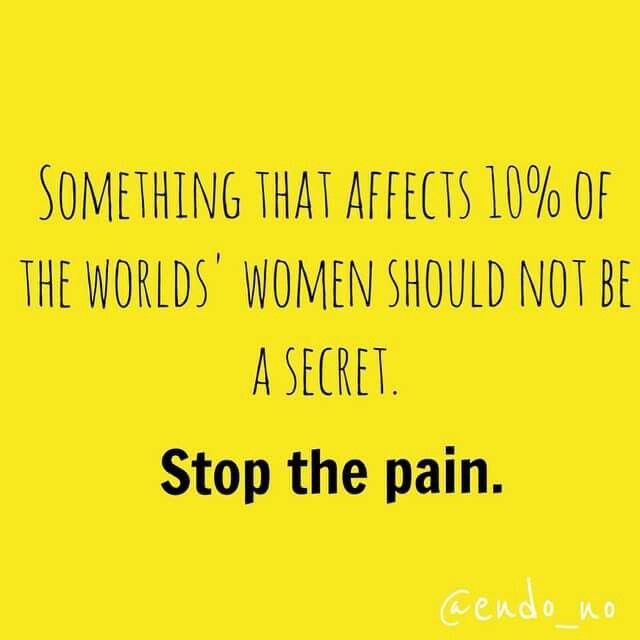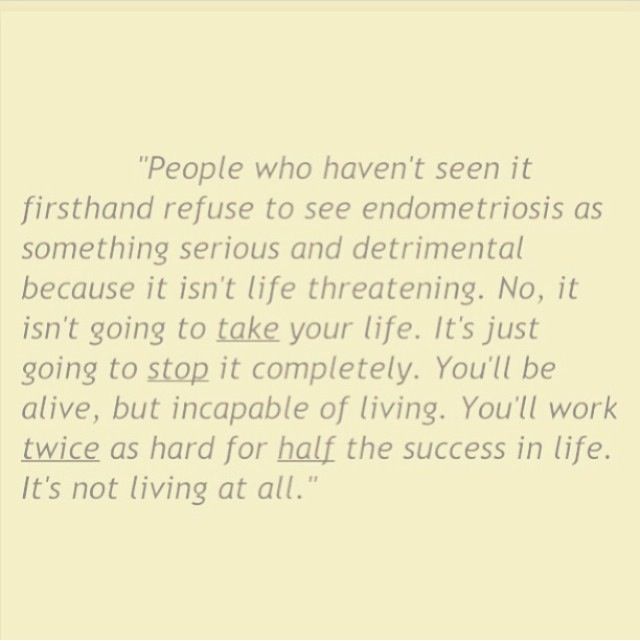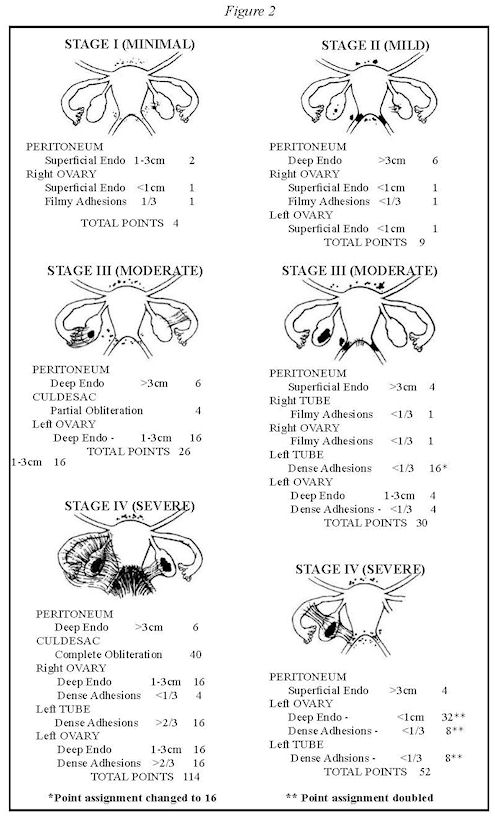
Do You Know Ten Women? Then You Know Endo.
Part of the reason I started this blog is to raise awareness, specifically about certain medical conditions that affect me in my daily life. As I was being interviewed last week by the crew of Endo What and the memories of my endo story came flooding back as I retold it in front of the cameras, I started to think more about why awareness for this disease is so important.
 Endometriosis is actually a very common disease, with an estimated 176 million women affected worldwide during their reproductive years. That’s about 1 in 10 women. So let’s say you know about 100 women. That means 10 of them have endometriosis whether they know it or not. But it’s a disease almost no one has heard of. How can this be? Because it’s a “below-the-waist” issue, which has been an area of the female body that people feel ashamed to talk about due to cultural taboos that exist to this day. So what? Let’s talk about it.
Endometriosis is actually a very common disease, with an estimated 176 million women affected worldwide during their reproductive years. That’s about 1 in 10 women. So let’s say you know about 100 women. That means 10 of them have endometriosis whether they know it or not. But it’s a disease almost no one has heard of. How can this be? Because it’s a “below-the-waist” issue, which has been an area of the female body that people feel ashamed to talk about due to cultural taboos that exist to this day. So what? Let’s talk about it.
Endometriosis is a painful condition in which tissue that is similar to, but not identical to that which is found in the uterus grows outside of the uterus. It can be confined to the pelvic cavity and the reproductive organs, but frequently ventures into the abdominal cavity or even further. It has even been found on the diaphragm and the lungs in rare cases. Courtesy of the Center for Endometriosis Care, symptoms of endometriosis can include:
- “Crippling period pain in menstruating females
- Abdominopelvic pain at any time, often intractable
- Bowel or urinary disorders/pain/dysfunction
- Painful intercourse/penetration/sexual activity
- Infertility/pregnancy loss/possible link to preterm births
- Immune-related and other comorbid disorders
- Allergies, migraines or fatigue that may tend to worsen around menses
- Coughing up blood in cases of pleural/thoracic endometriosis
- Leg and lower back pain, particularly in cases of sciatic endometriosis”
Women may present with few or many of these symptoms depending on the location and depth of lesions. Girls may begin experiencing symptoms of endometriosis even within 6 months after her first period; in fact, it has been stated that as many as 70% of teenagers with pelvic pain go on to be diagnosed with endometriosis.
 But why does it matter? Who cares about a disease that won’t kill you? Because the effects it can have not only on the life of the person who has it, but the effects on their spouses, partners, loved ones, and friends can be truly detrimental as well.
But why does it matter? Who cares about a disease that won’t kill you? Because the effects it can have not only on the life of the person who has it, but the effects on their spouses, partners, loved ones, and friends can be truly detrimental as well.
Much of the current understanding of endometriosis is outdated and even flat-out incorrect. Let’s examine what we know so correct information can be appropriately disseminated!
1. Medications can cure endo. FALSE!
- There are medications available that can possibly help manage the symptoms of endometriosis. These include GnRH agonists such as Lupron, which essentially shut down the ovaries, and oral contraceptives. However, these medications are only palliative in nature and will do nothing to treat the disease itself.
2. Hysterectomy is a cure. FALSE!
- A hysterectomy itself will not cure endo. If endo is located in areas of the body other than the uterus (and it usually is), these areas of endo will not suddenly go away in the absence of a uterus. A hysterectomy may be indicated in some patients with endo, however, such as those with adenomyosis.
3. Pregnancy will cure endo. FALSE!
- Women may experience temporary relief of symptoms of endometriosis during pregnancy due to the increase in progesterone in the body during pregnancy. However, most of the time, symptoms will return after giving birth.
4. Most women are diagnosed within a year of symptom onset. FALSE!
- Unfortunately, it can take an average of 10 years to be diagnosed with endometriosis in the United States. This is due to lack of awareness of the disease not only among the general public, but even among healthcare professionals.
5. Teenagers cannot get endo. FALSE!
- Girls can begin to experience symptoms as soon as they get their first menstrual period. In a culture that tells young girls to be tough and “it’s only cramps,” we are doing ourselves a disservice by not educating teenagers about what pain is normal and what is not. Early diagnosis is key to preventing unnecessary pain and treatments. If a teenager undergoes complete excision as soon as possible, she can be saved a lifetime of pain, unnecessary treatments, and misdiagnoses.
6. Endometriosis has no affect on a woman’s ability to conceive. FALSE!
- Based on the unfortunate amount of time it often takes to become diagnosed with endometriosis, some women do not realize they have endo until they attempt to become pregnant. By this point, the disease has often advanced to the point that about 30-40% of women experience fertility problems. Thankfully, various studies have shown that with proper excision surgery, fertility can often be restored.
 7. Staging of the disease depends on how much pain a woman is having. FALSE!
7. Staging of the disease depends on how much pain a woman is having. FALSE!
- The American Society of Reproductive Medicine (ASRM) classification system is based on the location, extent of and depth of disease, presence and severity of adhesions, and presence and size of endometriomas. Based on the corresponding number of points, endometriosis is assigned into stages I-minimal, II-mild, III-moderate, or IV-severe. Stage does not correlate with severity of symptoms and a better system sorely is needed.
8. Endo cannot be passed down from mother to daughter. FALSE!
- Girls with a relative who has endometriosis are 5-7 times more likely to develop endometriosis themselves. However, this is an area in which much research is needed to understand the true genetics behind the disease.
9. Endo can be diagnosed through CT/MRI/ultrasound. FALSE!
- While clinicians may develop a suspicion for endometriosis based on the findings during a pelvic exam, evidence of endometriosis itself cannot be found via any imaging modality.
10. Any OB/GYN can perform the gold standard excision surgery. FALSE!
- Surgery for endometriosis is very specialized. The “typical” methods of cauterization, ablation, and vaporization performed by most OB/GYNs only removes the surface of the endo lesion, leaving cells behind underneath to grow back. Excision is the gold standard therapy for endometriosis, removing the entire lesion.
-
“Endometriosis surgery is rightfully considered the most difficult surgery to be done in gynecology, and some cases will seem to be the most difficult surgery possible anywhere in the human body, maximally taxing the mental and physical strength of the surgeon. For those surgeons who relish challenge, endometriosis is the perfect disease.” ~Dr. David Redwine
The best we can do as women and men who love and know women with endo is to make sure correct information is being spread about the disease so more women don’t have to suffer years for a diagnosis or go through 13 surgeries before they finally get a chance to have excision with one of the limited number of specialists in the world. Help spread the word! If you know ten women, you know endo!

💛ribbonrx

0 thoughts on “Do You Know Ten Women? Then You Know Endo.”
Thank you for speaking out. I had an exploratory laparotomy looking for endo, and my doc did a tubal ligation and a uterine ablation at the same time. I was (obviously) not planning more kids then (I had 3). This was after 2 miscarriages and 2 hemorrhagic ovarian cysts.
The uterine ablation was easily the most painful surgery I’ve had….even still.
Also….1 in 4 pregnancies end in miscarriage, even if the woman doesn’t realize it because it was so early. We need to support each other!
Reblogged this on ribbonrx and commented:
We’re into the second half of Endometriosis Awareness Month! Here is a post with some basic facts and busted myths about endometriosis, and truth about how common this condition actually is. If you know ten women, you know endo!
Great post. It’s really scary when you sit down and think about how many of your friends that one in ten women actually means.
I’d never heard any of my friends mention Endometriosis before I was diagnosed, so I assume most must be undiagnosed. We really need to start talking about this stuff more openly so women know what’s not normal and to recognise the symptoms of endometriosis (and other pelvic conditions which I’m sure have same problem)